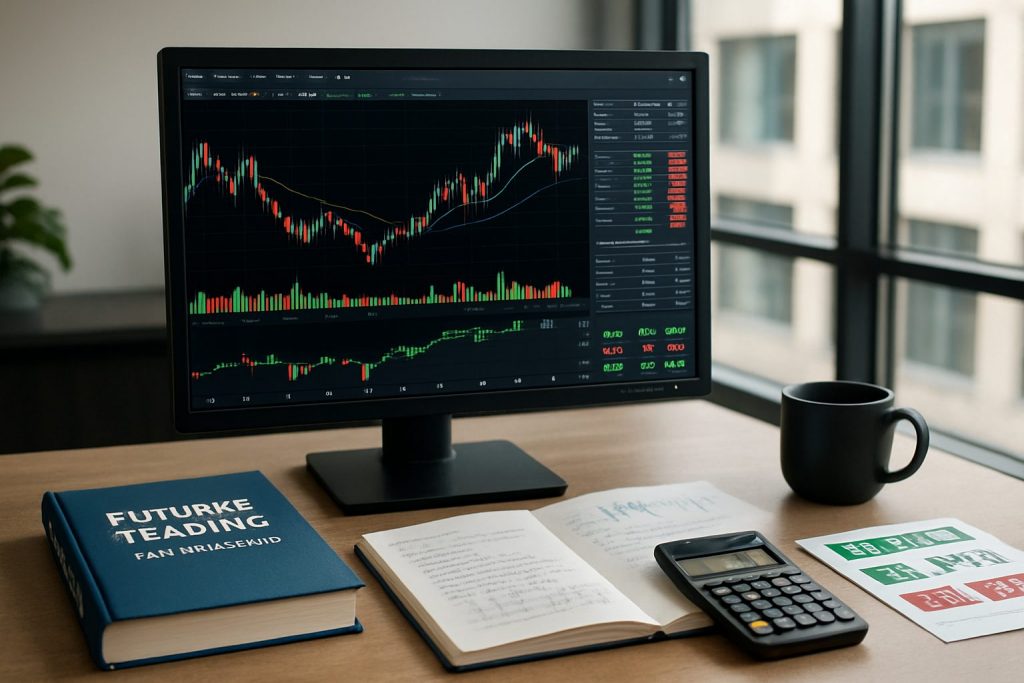What is the smallest contract size in futures for beginners? The smallest contract size in futures for beginners is typically the Micro futures (micro E‑mini and other micro contracts), which often represent about 1/10th or less of standard contracts and can carry intraday margins under $100.
Micro futures have reshaped access to futures markets by offering bite‑sized exposure to indices, commodities and crypto with a fraction of the capital traditionally required. For a new trader the appeal is simple: smaller tick values, lower intraday margin and the ability to test real strategies without risking large sums. Market venues such as the CME Group list many micro contracts (Micro E‑mini S&P, Nasdaq, Russell, plus micro gold, crude and crypto), and liquidity has improved since their launch in 2019. Practical steps—paper trading, tight position sizing, and realistic stop placement—help convert theory into repeatable results. This guide is intended for non‑US residents and focuses on how micro contracts lower the barrier to entry, typical margin examples, concrete starting plans (many traders begin with $500–$1,000), and the tools and demo resources to practise before trading live.
Smallest contract size in futures for beginners: Micro futures and concrete examples
Micro futures are designed to scale down notional exposure. Below are representative micro contracts and their typical intraday margins and tick economics as seen in retail platforms in 2025.
- Why these matter: lower capital, finer risk control, and easier position sizing for beginners.
- When to pick which: choose based on volatility profile (indices vs. commodities vs. crypto).
- Practical note: intraday margin can be substantially lower than overnight margin; always check live platform rates before trading.
| Contract (symbol) | Intraday Margin (approx.) | Tick Size / Value | Why it’s beginner‑friendly |
|---|---|---|---|
| Micro E‑mini Russell 2000 (M2K) | $81.05 | 0.10 / $0.50 | Lowest margin, good for learning small‑cap index dynamics |
| Micro Ether (MET) | $151.80 | 0.05 / $0.50 | Crypto exposure with regulated cash settlement |
| Micro E‑mini S&P 500 (MES) | $187.62 | 0.25 / $1.25 | High liquidity, stable for beginners |
| Micro E‑mini Nasdaq‑100 (MNQ) | $268.84 | 0.25 / $0.50 | Faster moves—good for disciplined scalpers |
| 1 oz Gold (1OZ) | $176.00 | $0.25 / $0.25 | Low notional precious metals exposure |
| Micro WTI Crude Oil (MCL) | $344.30 | 0.01 / $1.00 | Commodity access with smaller dollar swings |
Key insight: Micro contracts let beginners translate small dollar risk into real market experience; the choice should balance margin, tick risk and liquidity.
How micro futures reduce capital needs and help manage risk
Micro futures are not magic shields against losses, but they make risk management practicable for small accounts. The following list explains the mechanics and practical rules for preservation of capital.
- Smaller notional size: 1/10th or less of standard contracts reduces per‑tick P&L.
- Lower intraday margin: some micro contracts allow intraday entries for under $100.
- Cleaner position sizing: easier to calculate fixed‑dollar risk per trade.
- Leverage awareness: less capital required does not mean leverage should be abused.
| Aspect | Micro futures effect | Practical rule |
|---|---|---|
| Capital required | Down dramatically vs. standard contracts | Start with $500–$1,000 for disciplined intraday testing |
| Volatility control | Smaller tick value lowers dollar swings | Size positions so max loss per trade is 1–2% of account |
| Psychology | Less stress from smaller dollar moves | Practice with a demo account until consistent |
Example anecdote: a fictional trader named Mira started with a €700 account, paper‑traded MES for two months, then took one micro contract live with a strict €35 risk cap per trade. The small scale let Mira learn market timing without catastrophic drawdowns. Insight: scaled learning beats rushed exposure.
How to start trading the smallest futures contracts (practical checklist and resources)
Starting requires platform access, a demo phase, clear risk rules and an understanding of fees. The next list gives a practical starter plan; links offer deeper reading on funding, leverage and rules for day trading.
- Open a demo account: practise micro contracts in a simulator or demo account.
- Fund conservatively: many begin with $500–$1,000 as working capital.
- Check intraday margin and fees: include commissions and data costs in break‑even.
- Use strict risk rules: predefine max loss per trade and per day.
- Study and document trades: keep a trade journal and review weekly.
| Step | Action | Useful resource |
|---|---|---|
| Demo | Paper trade micro contracts 4–8 weeks | Trading practice resources |
| Funding | Deposit conservative starting capital | Is $1,000 enough? |
| Leverage & rules | Decide intraday vs overnight sizing | Leverage with $500 |
| Account type | Understand margin and maintenance requirements | Margin account basics |
Practical platforms and demo access: for non‑US residents the first step is often a demo environment or a platform that supports micro futures paper trading. Pocket Option, Quotex and Olymp Trade are frequently used by international traders for demo practice and strategy refinement before moving to exchange‑connected platforms. Before trading live, compare data feeds, order types and commission schedules.
- How much is required to start day trading futures?
- Absolute minimum to day trade
- Can I start day trading with $2,000?
- Avoiding the $25k rule via futures
- Day trading with a prop firm account
Final practical insight: begin small, paper trade until a repeatable process is proven, then scale position size gradually while preserving capital.
Common pitfalls and discipline checklist for micro futures traders
Micro futures simplify entry, but common errors still derail beginners. The following checklist prevents common issues and closes with a guiding sentence to move confidently.
- Avoid oversized positions even if margin is small.
- Always include round‑trip commissions and data fees in calculations.
- Use stop losses and limit total daily loss to protect capital.
- Document every trade: entry, exit, rationale and emotion.
| Pitfall | Why it happens | Fix |
|---|---|---|
| Overleveraging | Small margin tempts large positions | Cap risk to 1–2% of account per trade |
| Ignoring fees | Assumes margin is the only cost | Include commission and data in break‑even |
| Skipping demo | Desire to trade live immediately | Paper trade 300+ trades before live |
Guiding sentence: discipline and a process‑first mindset are the true scalers of results, not merely smaller margins.
Resources and next steps (non‑US residents)
- Practice with demo tools and strategy replay.
- Read funding and margin guides: is $1,000 enough?
- Understand leverage choices: leverage with $500
- Clarify account and rule questions: margin account essentials
- Explore day‑trading rules and alternatives: 25k rule and futures
Practical next step: open a demo environment, build a simple plan, and track a minimum of 90–120 trades before risking live capital.
Questions beginners ask
What is the cheapest futures contract to trade?
The Micro E‑mini Russell 2000 (M2K) is often the cheapest to trade by intraday margin examples, with intraday margins seen under $100 on many platforms.
Can you trade futures with less than $100?
Yes—some micro futures offer intraday margin below $100, but using such thin capital leaves little room for error; a modest bankroll (often $500–$1,000) is recommended for practical risk control. See resources on starting capital above.
Are micro futures good for beginners?
Yes; micro futures reduce notional exposure and tick risk, making them ideal for learning position sizing and discipline.
How to practice before going live?
Use demo accounts, replay tools, and documented rules. See trading practice resources and related guides linked above.
Do micro futures remove market risk?
No—micro size reduces dollar swings, but volatility remains; risk management and stop discipline remain essential.
With over a decade of experience navigating global financial markets, I specialize in identifying trends and managing risk as a professional trader. My passion for economics drives my daily commitment to staying ahead in this fast-paced industry. Outside of the markets, I enjoy exploring technology like cryptocurrencies and new investment strategies.

